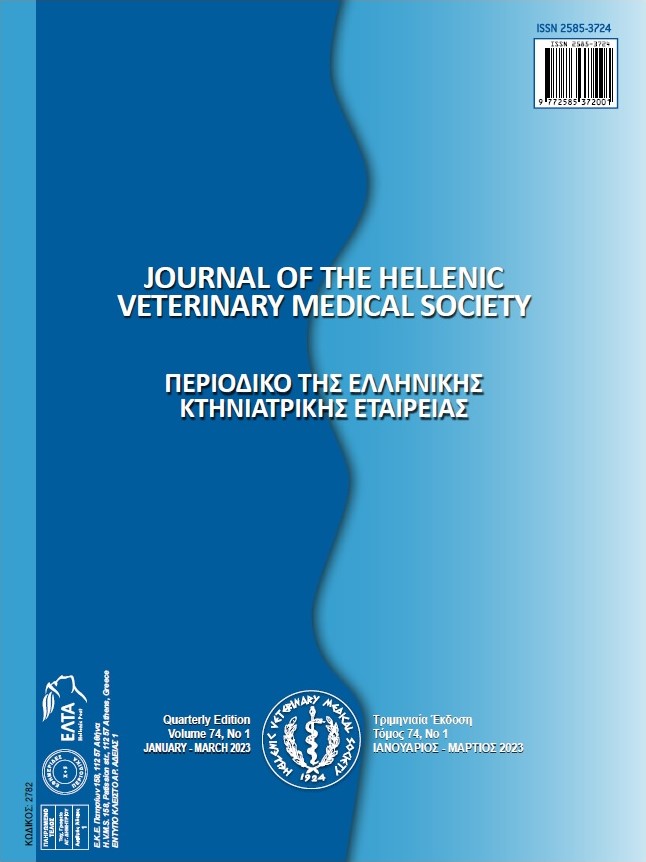Assessment of oxidative stress, trace elements, serum biochemistry, and hormones levels in weaned calves with dermatophytosis

Abstract
In this study, it was aimed to evaluate oxidative stress, serum biochemistry, trace elements, minerals, and testosterone and thyroid hormone levels in weaned calves with dermatophytosis. A total of 28 weaned Holstein calves were used in the study, including 6-8 months old, 14 with dermatophytosis (7 males, 7 females) and 14 healthy (7 males, 7 females). The animals were grouped as the diseased and healthy animals, 14 animals in each group as well as the male diseased and the male healthy animals were grouped as 7 animals in each group for the comparison of testosterone levels. The blood analyses were performed using ELISA kits and biochemistry automatic analyzer. There was a significant difference between the diseased and healthy groups for NO (nitric oxide) (P<0.05), TOS (total oxidative stress) (P<0.001), TAC (total antioxidant capacity) (P<0.01). However, in comparison of the diseased and healthy groups, serum biochemistry with the exception of glucose and triglyceride,trace elements except for manganese, minerals, and thyroid hormone levels were not statistically different (P>0.05). In comparison of the diseased and healthy animals for testosterone levels, it was not determined any difference (P>0.05). The present study revealed that dermatophytosis could affect oxidant status in calves with dermatophytosis, and that TOC (total oxidant capacity) and NO as oxidative stress marker might be increased for fungicidal effect in the diseased animals with dermatophytosis.
Article Details
- How to Cite
-
SEZER, K., HANEDAN, B., OZCELIK, M., & KIRBAS, A. (2021). Assessment of oxidative stress, trace elements, serum biochemistry, and hormones levels in weaned calves with dermatophytosis. Journal of the Hellenic Veterinary Medical Society, 72(1), 2653–2660. https://doi.org/10.12681/jhvms.26747
- Issue
- Vol. 72 No. 1 (2021)
- Section
- Research Articles

This work is licensed under a Creative Commons Attribution-NonCommercial 4.0 International License.
Authors who publish with this journal agree to the following terms:
· Authors retain copyright and grant the journal right of first publication with the work simultaneously licensed under a Creative Commons Attribution Non-Commercial License that allows others to share the work with an acknowledgement of the work's authorship and initial publication in this journal.
· Authors are able to enter into separate, additional contractual arrangements for the non-exclusive distribution of the journal's published version of the work (e.g. post it to an institutional repository or publish it in a book), with an acknowledgement of its initial publication in this journal.
· Authors are permitted and encouraged to post their work online (preferably in institutional repositories or on their website) prior to and during the submission process, as it can lead to productive exchanges, as well as earlier and greater citation of published work.



